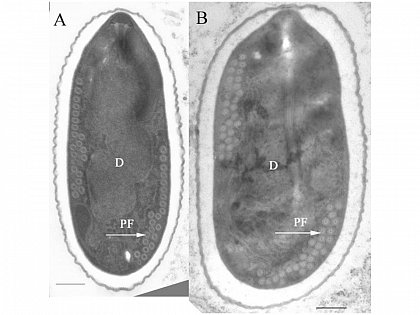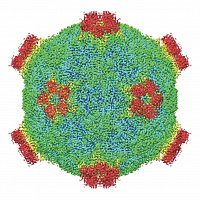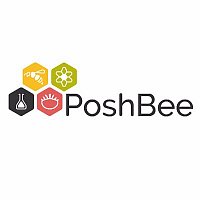Host-Parasite Coevolution
Pests, predators and pathogens have a major impact on insects, including wild and managed bee pollinators, and may be causal in recent losses of honey bees in North America and Europe. Exotic Varroa destructor parasitic mites and associated viruses would probably have led to the extirpation of temperate honey bee (Apis mellifera) colonies were it not for the use of acaricides and other colony management practices. Our interests lie in understanding the impact of parasites on host populations, their role in pollinator decline, and host - parasite coevolution. Current research is focused on honey bees, bumble bees (Bombus spp.) and other ‘wild bee’ species, their viral (e.g. Deformed wing virus) and microsporidian pathogens (e.g. Nosema ceranae), as well as interactions between pathogens and pesticides for host pollinator health. Support for this research is provided in part by the EU H2020 project PoshBee and iDiv . An additional recent focus of our research is on the use of antimicrobial substances as a form of external immune defense by social insects and on host-parasite interactions involving fungi of the order Laboulbeniales.

Transmission electron micrographs of spores of the honey bee microsporidian pathogens (A) Nosema ceranae and (B) Nosema apis. D: diplokarya; PF with arrows: coils of the polar filament. The scale bar is 0.5 µm. (photos: Ingemar Fries)

Molecular surfaces of the Deformed wing virus virion as determined by cryo-electron microscopy, rainbow-colored according to distance from the particle centre (from kubník et al., 2017)

Key references
Natsopoulou, M.E., McMahon, D.P., Doublet, V., Frey, E., Rosenkranz, P. & Paxton, R.J. 2017. The virulent, emerging genotype B of Deformed wing virus is closely linked to overwinter honeybee worker loss. Scientific Reports 7, 5242. DOI: 10.1038/s41598-017-05596-3
Radzevičiūtė, R., Theodorou, P., Husemann, M., Japoshvili, G., Kirkitadze, G., Zhusupbaeva, A. & Paxton, R.J. 2017. Replication of honey bee-associated RNA viruses across multiple bee species in apple orchards of Georgia, Germany and Kyrgyzstan. Journal of Invertebrate Pathology 146, 14-23. DOI: 10.1016/j.jip.2017.04.002
Škubník, K., Nováček, J., Füzik, T., Přidal, A., Paxton, R.J. & Plevka, P. 2017. Structure of deformed wing virus, a major honey bee pathogen. Proceedings of the National Academy of Sciences 114, 3210–3215. DOI: 10.1073/pnas.1615695114
Tehel, A., Brown, M.J.F. & Paxton, R.J. 2016. Impact of managed honey bee viruses on wild bees. Current Opinion in Virology 19: 16-22. DOI: 10.1016/j.coviro.2016.06.006
Tragust, S. 2016. External immune defence in ant societies (Hymenoptera: Formicidae): the role of antimicrobial venom and metapleural gland secretion. Myrmecological News 23: 119-118
McMahon, D.P., Natsopoulou, M.E., Doublet, V., Fürst, M.A., Weging, S., Brown, M.J.F., Gogol-Döring, A. & Paxton, R.J. 2016. Elevated virulence of an emerging virus genotype as a driver of honeybee loss. Proceedings of the Royal Society of London B: Biological Sciences 283: 20160811. DOI: 10.1098/rspb.2016.0811
McMahon, D.P., Fürst, M.A., Caspar, J., Theodorou, P., Brown, M.J.F. & Paxton, R.J. 2015. A sting in the spit: widespread cross-infection of multiple RNA viruses across wild and managed bees. Journal of Animal Ecology 84: 615-624. DOI: 10.1111/1365-2656.12345
Natsopoulou, M.E., McMahon, D.P., Doublet, V., Bryden, J. & Paxton R.J. 2015. Interspecific competition in honeybee intracellular gut parasites is asymmetric and favours the spread of an emerging infectious disease. Proceedings of the Royal Society of London B: Biological Sciences 282: 20141896. DOI: 10.1098/rspb.2014.1896
Tragust, S., Feldhaar, H., Espadaler, X. & Pedersen, J.S. 2015. Rapid increase of the parasitic fungus Laboulbenia formicarum in supercolonies of the invasive garden ant Lasius neglectus. Biological Invasions 17: 2795-2801. DOI: 10.1007/s10530-015-0917-0
Our principal overseas collaborators
Prof. Mark Brown , Royal Holloway University of London
Dr. Joachim de Miranda , Swedish Agricultural University
Prof. Pavel Plevka , Central European Institue of Technology



